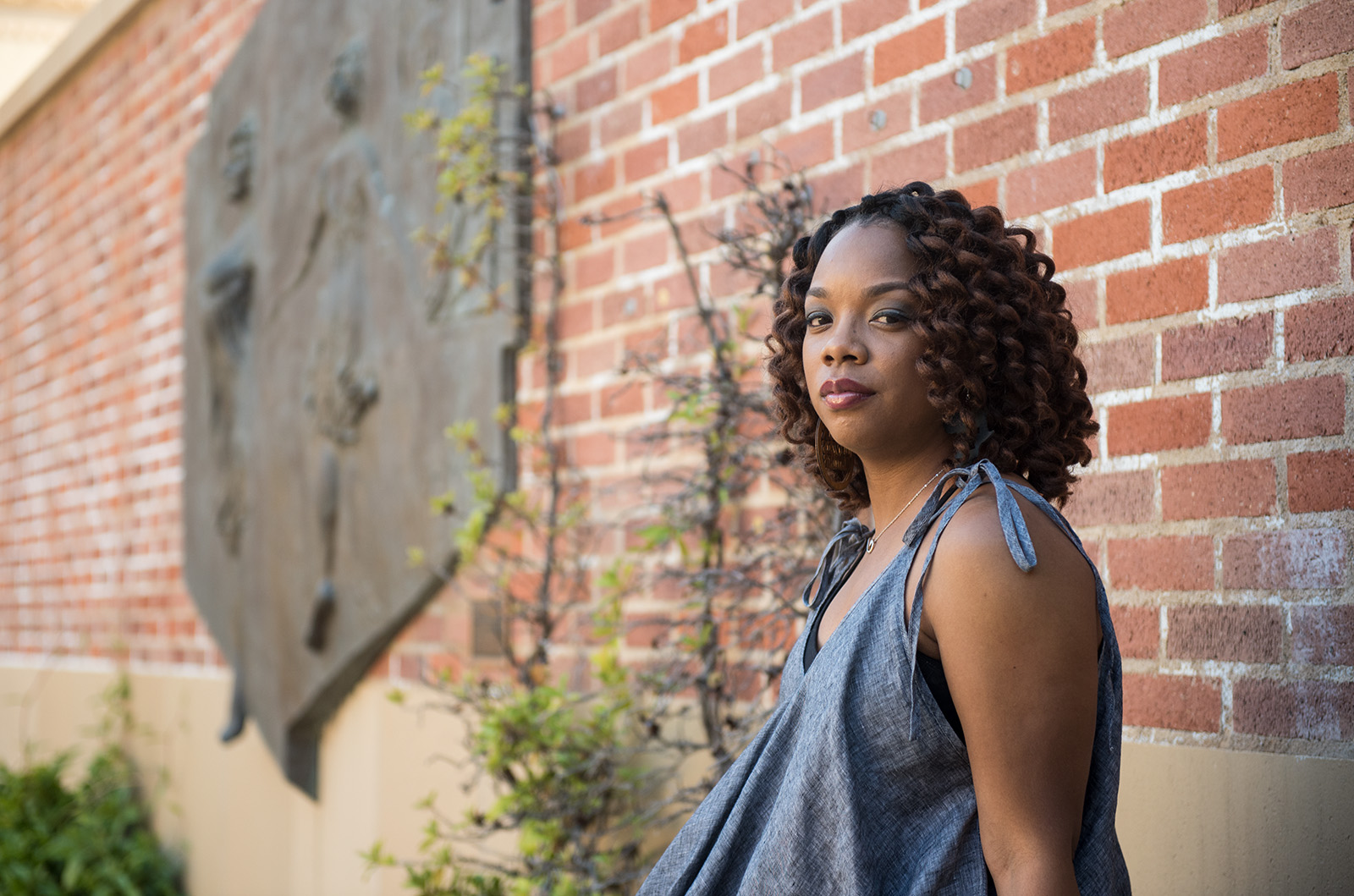Q&A: Graduate student explores bounce dance’s link to traditional Louisianian parades

Graduate student Saroya Corbett will conduct a talk at Fowler Museum on Friday about traditional second line parades in Louisiana. She plans to discuss her research on bounce dance while incorporating the exhibit “New Orleans Second Line Parades: Photographs by Pableaux Johnson.” (Eli Countryman/Daily Bruin senior staff)
"Culture Fix with Saroya Corbett"
Friday, April 26
Fowler Museum
Free
By Alexsandra Coltun Schneider
April 24, 2019 10:07 p.m.
Mardi Gras isn’t just a one-day event – it’s a whole season, said Saroya Corbett.
Corbett, a graduate student in world arts and cultures/dance, will conduct a talk at the Fowler Museum on Friday discussing her personal experience with the traditional second line parades of Louisiana.
Corbett said she plans on incorporating the museum’s exhibit “New Orleans Second Line Parades: Photographs by Pableaux Johnson” and her research on bounce dance.
The style developed from bounce – a genre of hip-hop that originated in New Orleans, Corbett said. Corbett, also a professional dancer and a dance educator, spoke with Daily Bruin’s Alexsandra Coltun Schneider about her findings on the impact and importance of bounce dance.
Daily Bruin: What do you plan on discussing in your gallery talk?
Saroya Corbett: I am new to (the) culture of the second line, as my research isn’t necessarily focused in second line. But part of learning the cultural landscape of southern Louisiana, and particularly New Orleans, I’ve taken the time to participate and learn about the practice. I am working on making it interactive … and give (the audience) a small sense of the feeling of what a second line is like, because it is something you can never really create. I’ll share some of the history that I’ve learned and some of the experiences that I’ve had during my three trips down to the region.
[RELATED: Mardi Gras event brings culture, traditions of New Orleans to UCLA]
DB: What are some of the feelings you are trying to recreate for the audience during your talk?
SC: Second line is definitely a celebratory tradition, and so the music is important, and the dance is important. Those are the two main elements of the parade. I’m going to play some music and encourage people to move throughout the exhibit with me. Encouraging people to do what they do and just enjoy the music and the sense of community that is built around second lines … is a major part of it. What is really wonderful about second lines is that it’s kind of a takeover of space, being that New Orleans, in particular, is going through gentrification. Particularly, it has been accelerated after (Hurricane) Katrina, and outsiders have come in, bought our property (and) completely skyrocketed the cost of living there.
(Second line) is an African-derived tradition, or black tradition, where they take over the street, and for that time period on the parade route, it becomes about this beautiful tradition.
DB: What fieldwork did you conduct in New Orleans for this year’s Mardi Gras?
SC: I’m looking at black social dance that focuses on the hips, the butt and the pelvis – which is why I located my research to southern Louisiana. I’m also looking at the dance team culture in the region, which is not just New Orleans; I’m also looking at Baton Rouge. One of the major focuses on the dance team side is the (Historically Black Colleges and Universities) experience of dance teams. Southern Louisiana, but in particular New Orleans, is full of so many black cultural traditions that it is hard to just focus on bounce and focus on dance teams and not notice second line.
[RELATED: Photographer to speak on his images of traditional New Orleans parades]
DB: What role does bounce dance play in New Orleans?
SC: I think that historically, that it was a trend that I feel like the height was in like late ’90s to early 2000s, when you saw a major push for bounce happening. I think in the more current times it has died down a lot. I feel like bounce has become ambiguous in a way where it’s not just this highlighted trend anymore; it has just kind of fizzled out. … I’m still doing my research, so I can’t say that exactly. But that is what I am sensing as an outsider, that the trend of it has died down within the city. I mean of course there is always the queer community that embraces bounce too, but in general that is what I’ve been sensing.
DB: What have you found from your research on majorette performances in Baton Rouge?
SC: I started off calling it majorette performance, but I am changing my language, and I now call them dance teams. That is just a part of my research, is that learning the language I should be using. Those dance teams are ubiquitous to a lot of HBCUs – not just the ones in Louisiana. Dance teams are a major thing in the entire region of (southern Louisiana) that live outside the university. I went to a parade, and it was school after dance studio after school of these dance teams, and it is a major part of what the culture is. I was expecting it to be a practice isolated within the HBCU school, and that’s not what was happening. And so that’s something my research is going more into, is looking at the HBCU experience but also looking at the community experience. The parade is nothing but a three-hour walk of people loving you, and you just dance and perform for your local community.


